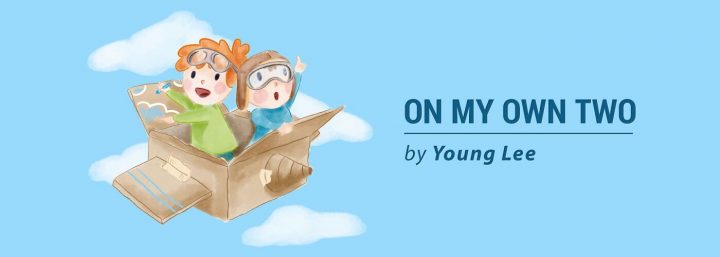My Version of ‘Chongxi’ and CMT
Written by |

Column by Young Lee
“Chongxi.” It’s a Chinese term referring to the superstitious custom of trying to erase a misfortune by overriding it with a joyous event or feeling. I stumbled upon this phrase a few weeks ago when my parents and I were listening to an episode of “This American Life,” a popular radio show.
In Act 1 of that episode, American writer and filmmaker Lulu Wang talks about how “chongxi” played a big part in her life. Listening to Wang reminded me of a recent conversation I had with a fellow “CMTer.”
For Wang, “chongxi” most prominently entered her life when doctors in China diagnosed her paternal grandmother with stage 4 lung cancer and predicted she would die within three months. But because Chinese tradition dictates that physicians inform the family instead of the patient — and because they didn’t want to burden her grandmother with the truth — Wang’s family told her grandmother that she was in perfect health.
The family even contrived a wedding celebration for Wang’s cousin and his new wife to provide an excuse for family members to visit their matriarch without telling her of the diagnosis. Hence, the “chongxi.”
This story might sound familiar. Wang used her own experiences as inspiration for “The Farewell,” a film featuring Awkwafina. Seeing it with my parents in a local theater prompted us to listen to “This American Life.”
I don’t know if I believe in the central idea of “chongxi” — that pure joy, no matter how contrived, has the power to act as a panacea for any misfortune. But when I spoke with Laurel Richardson, community outreach director of the Charcot-Marie-Tooth Association (CMTA), she used the word “joy” to describe her first experiences of exploring her identity as someone with CMT. That phrasing stuck with me.
Richardson is busy planning the upcoming CMTA Patient/Family Conference in St. Louis. Years ago, she went to her first CMTA meeting — one she organized and led as a founding member of a CMTA chapter.
“I never in my 20s would have gone to a support group meeting,” Richardson said. “No matter what you might have said to me, I never would have gone. But then in my mid-30s [my CMT] took a different turn and my drop foot really kicked in. And when I was 41, I started wearing braces. [It was at that point] that I wanted to voice my issue, to speak and meet other people, and get involved and tell my story and not be embarrassed that I have CMT. I wanted to bring joy to my life and not have [CMT] be something negative.”
I admire her proactive spirit, but I don’t think I’m at a point where I can find joy in talking about CMT.
Writing and thinking about how CMT affects my life has been therapeutic. And as I’ve attended more CMT-related events and seen how the CMT community has created positive change, CMT is beginning to mean more to me than limitations and pain.
I’m associating it with more positive things. When people ask me about CMT these days, I may even be excited to chat about the last webinar I attended, or to talk about my experience at Walk 4 CMT.
I like this new feeling. I like the addition of joyous experiences. It’s not quite “chongxi” but I think it’s close.
***
Note: Charcot-Marie-Tooth News is strictly a news and information website about the disease. It does not provide medical advice, diagnosis, or treatment. This content is not intended to be a substitute for professional medical advice, diagnosis, or treatment. Always seek the advice of your physician or other qualified health provider with any questions you may have regarding a medical condition. Never disregard professional medical advice or delay in seeking it because of something you have read on this website. The opinions expressed in this column are not those of Charcot-Marie-Tooth News or its parent company, Bionews Services, and are intended to spark discussion about issues pertaining to Charcot-Marie-Tooth.





Leave a comment
Fill in the required fields to post. Your email address will not be published.